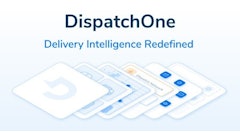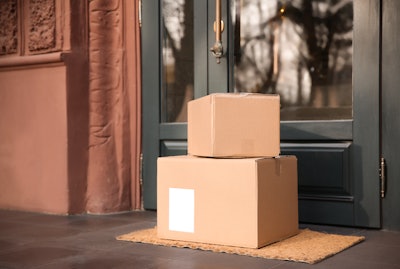
Shipping delays, peak surcharges, capacity crunches and labor shortages are issues that come to mind when thinking about the upcoming peak season and the stress that comes with strategizing a successful last-mile supply chain strategy. Add to that the rising number of Coronavirus disease (COVID-19) cases due to the Delta Variant, and this peak season will be one for the record books as we don’t know about the uncertainty of this ever-changing peak season landscape. As a result, more folks may opt to shop from home rather than risk their health again.
With the increased expectations for same-/next-day shipping, real-time communication updates from shippers about their orders and a growing concern for the environment, consumers are essentially driving shippers' last-mile delivery strategies. A happy customer equals a repeat customer. An unhappy customer equals more income for your competitors.
After all, even if everything in your supply chain goes as planned, if the last-mile delivery to the consumer doesn't go well, it can render all previous strategies worthless. Therefore, partnering with a last-mile delivery provider that can help tailor a plan that meets consumers' expectations is critical during the busiest time of the year.
Keeping up with consumers same-/next-day expectations
While we know that the 2021 peak season might end up being one to remember, it's hard to predict exactly how the season will go with the COVID-19 pandemic entering another phase here in the United States. We all hope that by the time November and December rolls around, life will be back to its New Normal. Still, for most businesses, peak planning is happening right now.
Partnering with a last-mile logistics provider with the flexibility to scale up or down based on changing capacity demands allows shippers to keep up with consumer expectations while adapting on the fly. Aggregating packages to create denser delivery routes (more packages delivered in fewer vehicles), tapping into the gig economy and utilizing dynamic routing are things that can significantly reduce thousands of wasted miles and costs.
For instance, most carriers do not offer 7-day-a-week deliveries. However, an extra day a week can make a big difference in getting more packages to more customers faster. In addition, choosing a last-mile carrier that operates seven days a week optimizes the opportunity for late-hour injections for either same- or next-day deliveries.
Real-time package tracking that goes above and beyond
According to a survey by Digital Commerce 360, 93% of consumers want to stay informed throughout the delivery process and 47% will not order again from a brand with poor delivery visibility. In comparison, 98% said delivery is a crucial part of their brand loyalty.
Real-time tracking and communications via app or SMS with the end-customer and the shipping company can enhance a consumer’s experience by freeing them from waiting around for a 4-hour delivery window or having to track a package when it does not show up as scheduled. When it comes to perishables, good customer communication is even more essential. If perishables cannot be delivered to an end-customer promptly, the waste becomes more than just fuel; it also becomes the product itself. Real-time tracking and communications also eliminate the back and forth between the end-customer and your company when a package is misplaced and quickly needs to be located.
Concern and consideration for environmental impact
According to IBM’s 2020 report, nearly 60% of consumers reported they were willing to change their shopping habits to reduce environmental impact. In addition, more than 70% said they would pay a premium for sustainable and environmentally responsible brands.
Sortation centers near urban centers and mobile hubs and using electric vehicles where possible are all line items shippers should consider when partnering with a last-mile logistics provider. The U.S. Census Bureau estimates that 83% of the U.S. population lives in urban areas, so locating sortation centers nearer to the end customers makes sense. Plus, it results in faster delivery times with less mileage covered (and therefore less gas).
Like sortation centers, mobile hubs such as a truck or container enables delivery drivers to drive shorter distances to pick up and replenish orders resulting in fewer drivers on the road and less gas consumption. And, since most electric cars can go around 100 miles before needing to be recharged, it makes them the perfect last-mile, green delivery vehicle of choice.
Even with peak season happening earlier than ever, it's still not too late to get a last-mile delivery strategy in place that considers consumers higher than ever expectations. A technology-forward, last-mile logistics provider who is flexible, cost-effective and adaptable can create a positive consumer experience with a brand.

![Pros To Know 2026 [color]](https://img.sdcexec.com/mindful/acbm/workspaces/default/uploads/2025/08/prostoknow-2026-color.mduFvhpgMk.png?auto=format%2Ccompress&bg=fff&fill-color=fff&fit=fill&h=100&q=70&w=100)
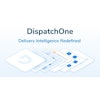



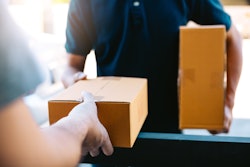
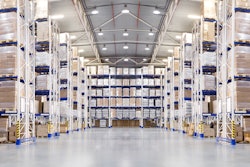


![Pros To Know 2026 [color]](https://img.sdcexec.com/mindful/acbm/workspaces/default/uploads/2025/08/prostoknow-2026-color.mduFvhpgMk.png?ar=16%3A9&auto=format%2Ccompress&bg=fff&fill-color=fff&fit=fill&h=135&q=70&w=240)
